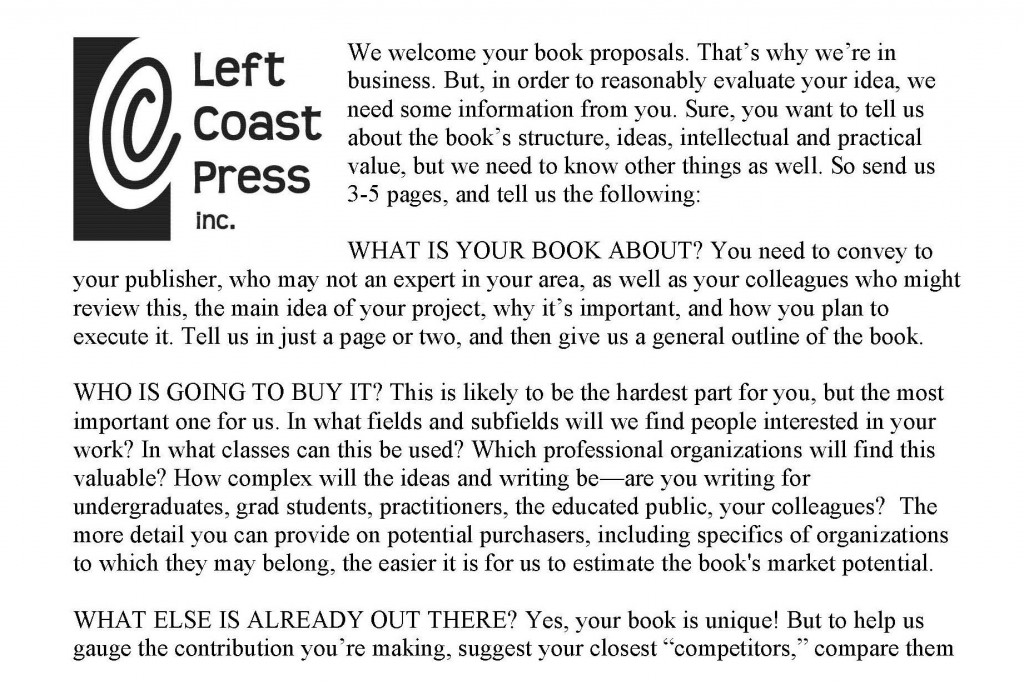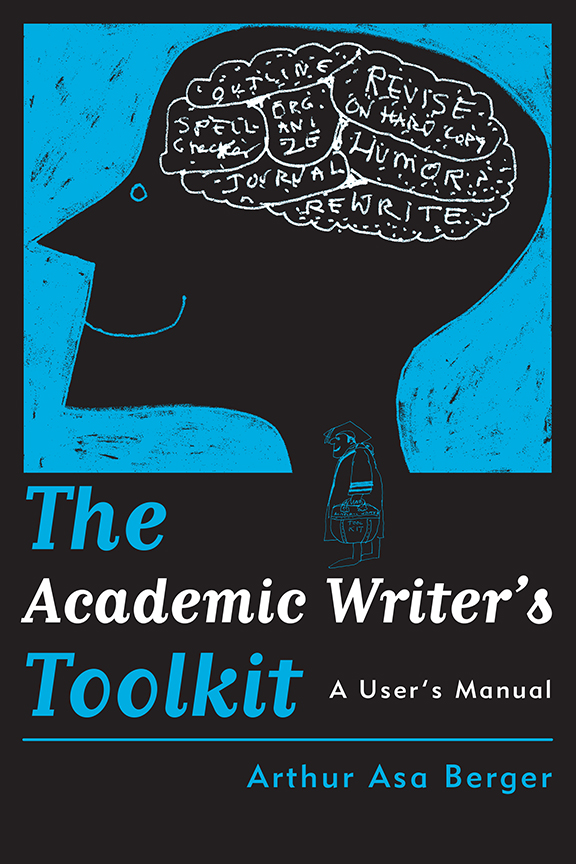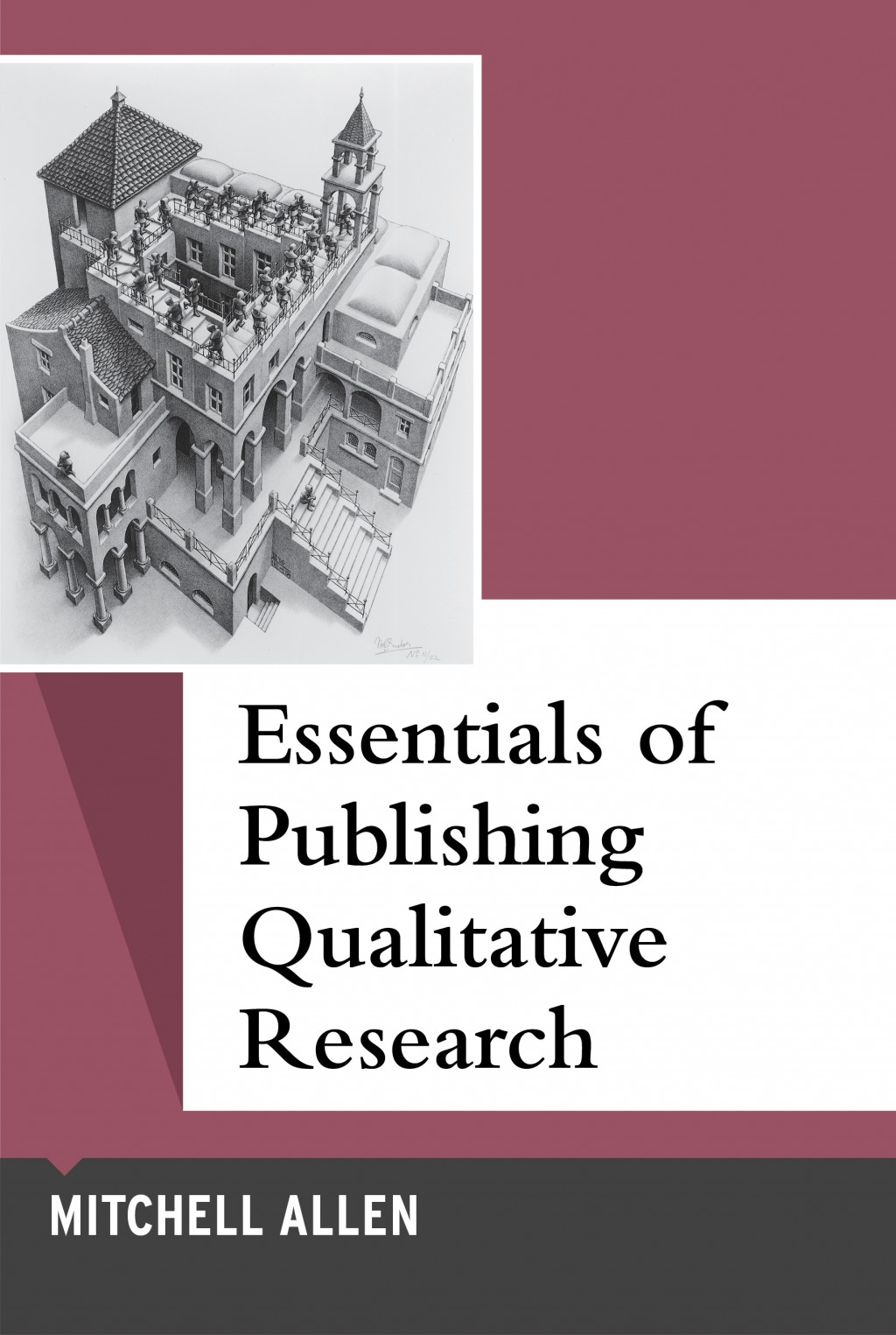


Mitch’s Blog
Six Helpful Tips for Your Book Proposal
Tuesday, June 13, 2017
In a recent post I noted that getting a book published does not, as is generally believed, begin with the book proposal. There’s a lot of field work involved first. But, having done the work, it becomes time to craft a proposal that will convince a publisher to invest $20,000 or $40,000 or more in your book.
Where do you look for guidance? That’s an easy one. Every publisher, that means every one, has guidelines for putting together a book proposal on their website. Usually these guidelines are brief and vague. Some publishers want you to fill out your information on their online form so they have everything they need. I’ve skimmed a number of publishers online guidelines and thought the ones offered by Berghahn, Palgrave, and Routledge the most helpful. But read the instructions of the publishers to whom you are submitting the proposal. If the guidelines insist on a specific format, follow their instructions.
Common to all of these sets of guidelines-- and what publishers always want-- is the answer to six important questions:
- What is this book about? (purpose, content, table of contents)
- Who is going to buy it? (market)
- What is it going to look like? (format, length, illustrations)
- When are they going to have it? (current status, schedule for completion)
- How are you qualified to write it? (author information)
- Can you write? (a writing sample, but not the entire manuscript)
Potential authors are the most concerned about the first and last. They’re happy to provide #5 and often have unrealistic expectations on #3 and #4. The publisher is inevitably most interested in #2. If you’ve done your proper fieldwork and have had substantial conversations with potential publishers, you should have a better sense on how to answer all of these questions. So I won’t detail them here. Instead, let me give you six tips to produce a winning proposal.
- Titles matter. That’s what’s gonna get the publisher’s attention, and that’s their key sales tool when they try to get people to buy it. No author has written or proposed a book without a lot of thought on the title. But it almost always is from the author’s perspective, not that of the buyer or, in this case, the publisher. Titles need to be descriptive, evocative, and, if anything, promise more than less. That’s what sells publishers and sells books. I convinced Whitney Battle-Baptiste to title her book Black Feminist Archaeology, knowing full well that it wasn’t the sole or
 definitive statement on that topic. It has paid off. The Academic Writer’s Toolkit. The Qualitative Manifesto. Use a subtitle to qualify your boldness if you feel you need it. Halfway titles, like “Toward a Sociology of XXX” or “Notes on a Theory of XXX” are too wishy-washy. If you want to use something metaphoric, rather than literal, that metaphor should clearly connote the topic at hand. If you have to explain your title to the reader on p. 1 of the book, they’ll probably never get that far.
definitive statement on that topic. It has paid off. The Academic Writer’s Toolkit. The Qualitative Manifesto. Use a subtitle to qualify your boldness if you feel you need it. Halfway titles, like “Toward a Sociology of XXX” or “Notes on a Theory of XXX” are too wishy-washy. If you want to use something metaphoric, rather than literal, that metaphor should clearly connote the topic at hand. If you have to explain your title to the reader on p. 1 of the book, they’ll probably never get that far. - Write the proposal for a dual readership. Academic authors slave over their book description knowing their Worst Nightmare Critic will probably be reviewing it for the publisher. But it will never get to your professional nemesis without first passing the screen of the editor at the publishing house. If she doesn’t understand what you’re talking about, she’ll simply reject the book without sending it to anyone who might recognize your brilliance. The book description needs to provide enough context in a jargon-free way for a non-specialist editor, who might have a degree in medieval Italian lit or mechanical engineering, to understand the importance of the topic to your field, and the importance of your contribution to that topic. This will also serve as a test of your writing skill. To be successful, any academic book needs to written to appeal beyond the few specialists in your academic network.
- Provide potential textbook information. Selling your book 10 or 20 copies at a time rather than one by one is useful to your publisher. There are a couple of ways to identify possible courses for your book to be used in and to quantify the number of instructors or students involved. Available online is the Market Data Retrieval catalog, which lists numbers of professors and college instructors in different subfields. Behind the firewall is Neilsen’s PubTrack—Higher Ed, which contains very detailed information on textbook sales based upon data obtained from college bookstores. At a more granular level, you should be able to come up with a list of colleagues who might use your book in their class. The publisher would welcome those names and the names and sizes of the courses they teach.
- Identify competing books. Nothing really competes with your book. You wouldn’t write it if it weren’t unique. But potential buyers have bought other books on this topic in the past and the publisher wants to know which ones. So pick some books in your subfield that have done well—maybe the ones that have been cited the most, or the ones that a publisher’s website lists as “best seller.” Publishers will gauge the potential for success of yours based upon these comparative titles. Compare what your book does that these don’t. Be positive, the competitors are successes for a reason. But convince the publisher that yours can do it better.
- Suggest reviewers. A respectable publisher will use an arms-length peer review process if they’re interested in your book. But seeking out appropriate reviewers is one of the bigger challenges they face and often stalls the decision process. A few suggestions from you, including email addresses and a brief description why they would be appropriate, will almost always help speed the process. No, your dissertation advisor or cousin is probably not appropriate to list, but it couldn’t hurt to suggest folks you know will look favorably upon your work.

- Be brutal about your writing schedule. If you generally don’t produce more than 3 articles a year, don’t expect to get a 9 chapter book done in six months without a sabbatical. Gauge as rationally as you can. Then add six months. Shit will inevitably happen, and it's better to have a cushion than to have the editorial assistant calling you monthly with "is it done yet?"
If you have the inclination, grab a copy of my Essentials of Publishing Qualitative Research, which deals with putting together a book proposal in much greater detail than I have room for here. Books by Bill Germano and Beth Luey are also useful, as is any clarifying conversation you have with the editor at the publishing house to whom you plan to submit your book.
If you want to hear more, I’m giving a webinar next week on this topic through the Center for Digital Archaeology. Hope to see you then.
(C) Scholarly Roadside Service
Back to Scholarly Roadkill Blog
Scholarly Roadside Service
ABOUT
Who We Are
What We Do
SERVICES
Help Getting Your Book Published
Help Getting Published in Journals
Help with Your Academic Writing
Help Scholarly Organizations Who Publish
Help Your Professional Development Through Workshops
Help Academic Organizations with Program Development
CLIENTS
List of Clients
What They Say About Us
RESOURCES
Online Help
Important Links
Fun Stuff About Academic Life


